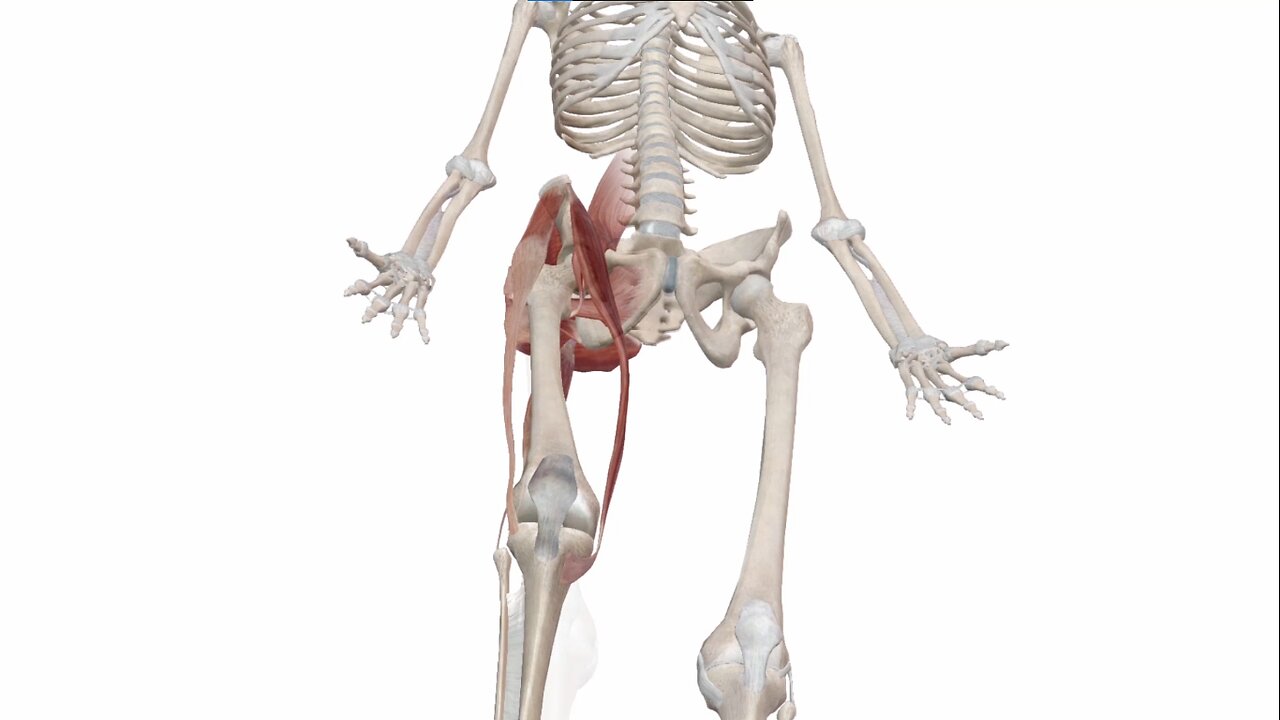Premium Only Content

Total hip replacement part 2 hip - human animated anatomy
total_hip_replacement_02_hip_biomechanics
===
[00:00:00] Hello, my name is Dr. Tom Van Orna. I'm a doctor of physical therapy and a sport performance specialist. I'm going to walk you through the biomechanics and functional movement of the hip joint femoral acetabular anatomy allows for three degrees of freedom, sagittal plane flexion, and extension, frontal plane, abduction, abduction, and transverse plane, internal and external rotation.
In the sagittal plane, the hip can usually flex to 140 degrees. This is crucial for the mid-stance and swing through portions. As well as for squatting, the hip should extend to 15 degrees. This is needed for the push off and terminal hip extension phases of gait. In the frontal plane, the hip should be able to abduct to about 45 degrees and adduct to about 30 degrees.
Maintaining adequate hip abduction during single leg stance and avoiding excessive collapse into hip abduction is crucial for healthy hips and. Poor control of single leg stand stability results in increased compressive forces through the weight-bearing portions of the hip and knee, which can result in a [00:01:00] generation over time in the transverse plane, the hip should be able to internally and externally rotate about 45 degrees in each direction.
Adequate hip transverse plane motion is essential for reciprocal motions in the body, such as walking, running, and rotational sports like baseball, golf, and tennis. That brings us to the end of our discussion. Thanks so much for joining me today.
-
 1:03:38
1:03:38
Man in America
7 hours agoUSAID Corruption, $21 TRILLION Missing, & the End of the US Global Empire?
22.1K9 -
 56:38
56:38
Flyover Conservatives
7 hours ago6 Steps to Take Advantage of Trump’s New Golden Age! - Clay Clark | FOC Show
18.3K2 -
 1:15:25
1:15:25
Glenn Greenwald
7 hours agoTulsi and RFK Jr. Approved by Key Senate Committees; Trump Meets Netanyahu: Wants to Cleanse Gaza; Pro-Palestinian Group Suspended at UMich | SYSTEM UPDATE #402
77K95 -
 1:43:57
1:43:57
Danny Polishchuk
7 hours agoThe Funniest Call In Show On Earth - Live From New York City's Best Comedy Club
35.2K1 -
 1:41:13
1:41:13
megimu32
7 hours agoON THE SUBJECT: Will the Super Bowl Be WOKE??!
30K6 -
 1:18:26
1:18:26
Redacted News
8 hours agoBREAKING! USAID Created and Funded COVID-19 Virus and Bioweapons, RFK and Tulsi pass major hurdle
150K201 -
 50:54
50:54
Candace Show Podcast
8 hours agoBecoming Brigitte: Gaslighting The Public | Ep 1
199K205 -
 4:41:05
4:41:05
Right Side Broadcasting Network
13 hours agoLIVE: President Trump Holds Press Conference with Israeli PM Benjamin Netanyahu - 2/4/25
225K99 -
 1:11:49
1:11:49
Edge of Wonder
8 hours agoInception Is Real: How Ads Are Showing Up in Our Dreams
36.5K6 -
 54:50
54:50
LFA TV
12 hours agoThe Trade War Ends | TRUMPET DAILY 2.4.25 7pm
33.5K7